New & Expectant Mothers
Page updated: 20/05/2025
Managers will already have undertaken risk assessments for activities that present a significant risk to the health and safety of their staff. These should have identified any hazards in the workplace that could pose a risk to female employees of childbearing age, or to new and expectant mothers. Information on any significant hazards and their controls must be communicated to all employees who may be affected by them, including female employees to whom it may be relevant.
Once a manager receives written notification from a female employee that she is either pregnant, has given birth within the last six months, or is breastfeeding, Managers must undertake a specific risk assessment for that individual i.e.:
- Discuss with her the implications of any current risk assessments for her work activities i.e. what hazards have been identified.
- Consider ways in which either her or her child could be harmed from these hazards.
- Consider the potential severity of the harm to them (worst case scenario) and how likely it is to happen i.e. for the harm to be realised.
- Make every effort to remove, or prevent, her exposure to any hazards that may cause them harm.
- If this is not possible, then temporarily adjust her working conditions or hours of work.
- If this is not possible, then attempt to offer alternative work for the duration of her pregnancy, and for up to 6 months afterwards if required.
- If this is not possible, then suspend her from work. The Employment Rights Act 1996 requires that this is with full pay.
Where there are known medical concerns about the pregnancy a Med 3 Form can be requested from the expectant mothers GP or midwife. (This provides a professional opinion on the individual’s ability to perform their usual occupational tasks.)
- Where a Med 3 Form is received, the respective Manager must consider the GP’s or midwife’s advice as part of their risk assessment for the work activities of that individual.
Managers should also:
- Review the outcomes from the specific risk assessment on a regular basis e.g. 3 monthly, or whenever the employee feels her circumstances have changed.
- Inform the employee any local welfare arrangements in place e.g. rest facilities, or a healthy and safe environment for new mothers to express and store milk (although the latter is not a legal requirement it is good practice).
Note: Managers can use the Risk Assessment for New & Expectant Mothers below to aid this process and document any conversations during the three trimesters within the risk assessment. It’s imperative that the new or expectant mother is involved in this exercise to give them an opportunity to express their feelings on any areas of work they are uncomfortable with during the progression of their pregnancy.
Remember, pregnancy is not an illness. However, hormonal or postural changes may occur during the term of the pregnancy that can make normal work activities more difficult or uncomfortable to do.
The Management of Health and Safety at Work (Amendment) Regulations 2006 (MHSW) include regulations that protect the health and safety of new and expectant mothers who work. They cover women of childbearing age who are or in the future could be pregnant, have given birth within the previous six months, or are breastfeeding.
Upon receiving written confirmation that a member of staff is pregnant, line Managers are obliged to carry out a specific risk assessment for the work activities of the expectant mother and record any outcomes from this process.
Managers may request a certificate from the GP or Midwife to confirm the employee’s condition. Upon receiving written confirmation line Managers are obliged to carry out a review of their risk assessments for the work activities of the expectant mother and record any outcomes from this process (this can be done using the Risk Assessment Checklist. Where there are known medical concerns about the pregnancy a Med 3 Form can be requested from the expectant mother’s GP. This provides a professional opinion on the individual’s ability to perform their usual occupational tasks.
There is no legal requirement for you to do so, but it is advised that expectant mothers, for their own and their unborn baby’s benefit, inform their line Manager in writing as soon as possible if they know they are expecting a child. If a new or expectant mother feels temporarily unable to carry out their normal duties then it’s important they discuss this with their line Manager as soon as possible.
The majority of our female workforce is office based, where there are limited risks to new or expectant mothers i.e. from poor posture at the workstation or from light manual handling tasks. However, there are some areas of the County Council where more significant hazards prevail for new or expectant mother’s e.g. female building surveyors, land surveyors.
Examples of some typical hazards include:-
Physical Hazards
Manual Handling - the lifting, carrying, pushing or pulling of heavy loads. A review of the type of loads the person can continue to handle at various stages of the pregnancy will be required.
Excessive noise, vibration, heat or coldness in the workplace - expectant mothers who may undertake site visits and are exposed to the elements and/or noisy conditions e.g. highways, surveying, construction. It will be necessary to review the type of site visits undertaken and decide whether they are appropriate at various stages of the pregnancy.
Musculoskeletal - standing or sitting for long lengths of time can result in aches and pains. A review of the layout of the workstation can sometimes be enough to ease the situation. Individuals should undertake a DSE self assessment and discuss any identified problems with their local Manager
Biological Hazards
Exposure to infectious diseases can cause harm to both an expectant mother and her unborn child
For example through close contact with:
- Infected wild or farm animals. Land Surveyors working in the country or near rivers should be aware of typical diseases and their symptoms, e.g. the symptoms of leptospirosis from infected rat urine.
- Infected persons. First Aiders providing emergency medical assistance may be exposed to infected bodily fluids.
- Infected ‘sharps’. Site Supervisors and Grounds Persons are at risk of injury from infected needlesticks or other sharps they may come into contact with.
Chemical Agents
There are limited chemical agents used within the organisation for office based workers. However, some groups of staff are more likely to come chemical agents than others e.g. cleaners, surveyors or land agency workers, may have contact with chemicals used in processes such as:
- solvent based glue being used to lay large areas of carpet;
- pesticides being used during crop spraying;
- products used for cleaning i.e. degreasers; or
- the chemicals used during sheep dipping operations.
Working Conditions
Unusually stressful work conditions - where the work is known to be intensive or stressful an expectant mother may not feel as able to deal with this due to their increased tiredness or emotional changes due to hormone activity and a review may be necessary.
Excessive working hours - where it is normal for individuals to undertake regular overtime, they may feel temporarily unable to fulfill these additional work commitments during certain stages of their pregnancy.
Lone working - any lone working arrangements should be reviewed, paying special attention to work commitments towards the end of the pregnancy, or where the individual has known medical conditions during the pregnancy. The consequences of an accident or the person falling ill whilst alone could be much more severe.
Long distance travelling - a number of staff travel for a significant amount of their time at work. They may find this arrangement more uncomfortable as their pregnancy progresses due to their changing size and posture, and the limitations of car comfort!
Violence or aggression - heavily expectant mothers are a vulnerable target and would be less able to control, or even escape from, a situation involving violence or aggression. Again, these situations must be considered as part of the review of the risk assessment.
| Aspect of Pregnancy | Workplace Factors |
| Morning Sickness or Headaches | Early shift work or nauseating smells |
| Backache or Varicose Veins | Standing/ Manual Handling/ Posture |
| Haemorrhoids | Working in hot conditions |
| Frequent visits to the toilet | Difficulty leaving place of work |
| Increasing size | Personal Protective Equipment |
| Tiredness | Overtime or evening work |
| Balance | Slippery, wet floors or using steps |
| Comfort | Tight fitting work uniforms |
The Workplace (Health, Safety & Welfare) Regulations 1992 require employers to provide suitable rest facilities for workers who are pregnant or breastfeeding. Where necessary these should include somewhere for the woman to lie down. They are also encouraged to provide nursing mothers with a healthy and safe environment to express and store milk (although the latter is not a legal requirement). It is not suitable to use toilets for this purpose!
Managers should make their new or expectant member of staff aware of any local welfare arrangements in place.
This is covered by the CCC New and Expectant Mothers Policy.
All women returning from maternity leave have the right to request, in writing, that a reasonable arrangement with regard to breastfeeding and/or the expressing of milk is considered with the time away being via normal breaks, lunchtime and mutually agreed flexible working arrangements.
While an employee is breastfeeding, she and her baby must be protected from any hazards in the workplace under the same regulations that give protection to pregnant employees. For example, if the breastfeeding mother is likely to come into contact with substances hazardous to health, it is likely that it can enter the breast milk and pose a risk to the mother’s breastfed baby e.g. (mercury, lead, ionising radiation and biological agents.
Line managers should ask the mother before she returns to work whether she intends to continue breastfeeding so that appropriate steps can be taken e.g. by carrying out a review of the risk assessment for her work activities to make the job safe. As with pregnant employees, if the job cannot be made safe, she should be temporarily transferred to a suitable alternative post, or suspended on full pay.
A comfortable, appropriately equipped room should be made available for breastfeeding mothers to express their milk, with a fridge being identified where breast milk may be stored and a specific location being identified where expressing equipment can be stored.
Health & Safety
More from Health & Safety


